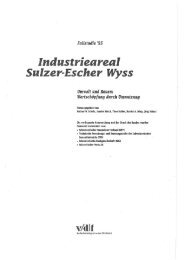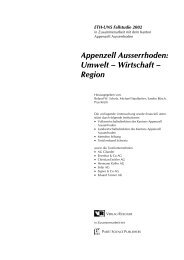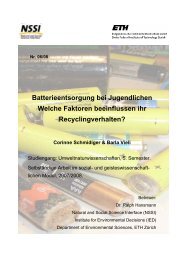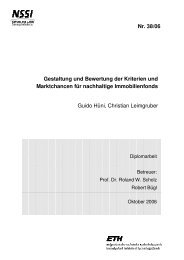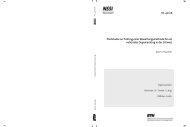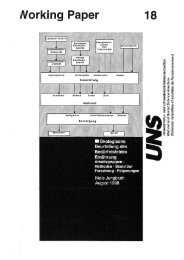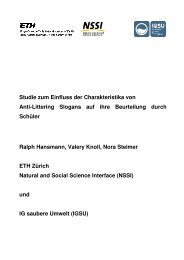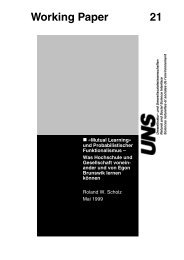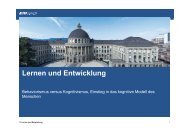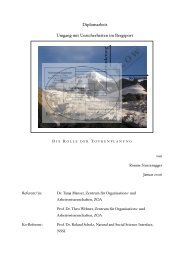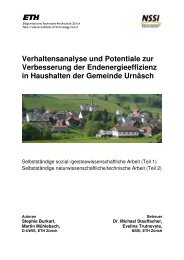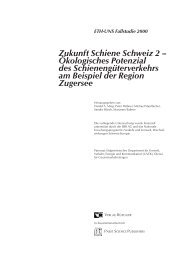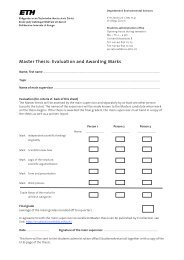Non-road fuel consumption and pollutant emissions ... - BAFU - CH
Non-road fuel consumption and pollutant emissions ... - BAFU - CH
Non-road fuel consumption and pollutant emissions ... - BAFU - CH
You also want an ePaper? Increase the reach of your titles
YUMPU automatically turns print PDFs into web optimized ePapers that Google loves.
<strong>Non</strong>-<strong>road</strong> <strong>fuel</strong> <strong>consumption</strong> <strong>and</strong> <strong>pollutant</strong> <strong>emissions</strong> FOEN 2008 68<br />
agricultural machinery is likely to remain low in the future, too, since there are as<br />
yet no signs of an introduction of a retrofitting requirement in this machine category.<br />
By contrast, as a consequence of the Ordinance on Air Pollution Control (Amendment<br />
dated 19 September 2008), more construction machines will be retrofitted so<br />
that by 2020 practically all machines in operation with an engine power > 37 kW<br />
will have been equipped or retrofitted with a particle filter system (Fig. 20).<br />
> Compared with agricultural machinery, the construction machines currently in use<br />
are newer, as we can see from Figure 34. This means that there is a higher proportion<br />
of newer, <strong>and</strong> thus “cleaner”, machines in use in the construction industry than<br />
in the agricultural sector.<br />
> For construction machinery, the first set of EU regulations governing maximum<br />
emission levels entered into effect earlier than the regulations governing agricultural<br />
machinery. This, combined with the fact that the fleet of construction machines is<br />
newer than that of agricultural machines, resulted in a situation in which 40% of excavators/dumpers<br />
met the EU emission requirements in 2005, compared with only<br />
8% of tractors (Fig. 34).<br />
Fig. 34 > Age distribution of construction <strong>and</strong> agricultural machinery<br />
The curves represent the respective age distribution, while the vertical dotted lines indicate the<br />
year in which the first EU regulations governing maximum emission levels entered into effect<br />
(i.e. 1 year earlier for construction machines than for agricultural equipment). NB: the vertical<br />
dotted lines indicating the years in which the regulations entered into effect represent a delay of<br />
one year (e. g. from 2003 → 2002) since all machines have to meet the specified requirement in<br />
the year of entry into effect.<br />
Entry into effect of EU I<br />
100%<br />
90%<br />
80%<br />
70%<br />
60%<br />
50%<br />
40%<br />
30%<br />
20%<br />
10%<br />
0%<br />
2003 2002<br />
2005 2000 1995 1990 1985 1980 1975 1970<br />
Year of manufacture<br />
Tractors (agriculture)<br />
Hydraulic excavators<br />
In 2005, 40% of excavators/dumpers complied with EU stage I<br />
(since 40% of these machines were less than 4 years old <strong>and</strong> were thus brought into circulation after the introduction of EU I).



